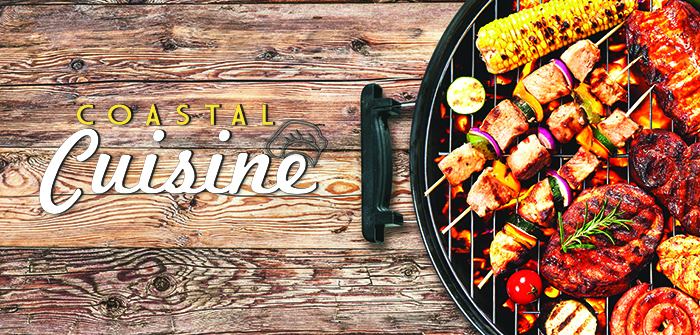By Liesel Schmidt
We all know that summer is theseason for getting the grill all fired up and ready to shine, the perfect time to show off all those mad skills you claim to have. Every steak, burger, and hotdog you cook to juicy perfection is a veritable jewel in your crown, each beautiful char mark proof that you—yes, you, equipped with your over-sized tongs and impressively large spatula—are the tamer of the open flame. Your talents are matchless, and now is the time to sit high on your throne and let the crowds be wowed, stunned into silence as they bite into your masterpieces of tender meatiness…
Whether or not that was a glimpse into reality or just how you imagine yourself, we areundeniably in the thick of grilling season. And even if your time manning the grill doesn’t always turn out quite as boast-worthy as you’d hoped, you can still have fun breaking out the briquettes, piling up the chips…or doing whatever it is you do to get your grill going.
Interestingly enough—though you might have already guessed this—grilling has been in practice since man discovered fire and actually learned how to put it to use. It wasn’t until the 1940s, however, that the backyard version of grilling became commonplace, as most grilling was strictly done at campsites and on picnics—i.e., where the conveniences of stove tops and ovens were nowhere to be found. When middle class America began to populate suburbia after World War II, the grate-ness (ha ha) of grilling at home really caught fire; and by the 1950s, pretty much everyone was doing it.
Even in the midst of all that popularity, however, the grill itself hadn’t quite reached its full potential, as the flat, open brazier-style so common at the time was extremely difficult to control. It was the ingenuity of Chicago metalworker George Stephen—a controlling member of Weber Bros. Metal Spinning Co.—as he tinkered with and modified one of the company’s harbor buoys by cutting it along the equator, adding a grate, and using the top as a lid, controlling the temperature with vents he’d cut into it, that led to the re-birth of the grill. And, consequently, to the invention of the Weber grill that so impacted the future of grilling. And all of America.
Naturally, meat is one of the top contenders when it comes to things that make their way onto the grates of the grill. From steaks and ribs to healthier proteins like chicken and fish, those char marks seem to make everything better, giving them a distinct taste that pairs oh-so-well with the fresh air and the summer sun. And yes, the grill is also the perfect place to cook up some fresh produce, as that flame-kissed flavor does something almost magical to vegetables and imparts a caramel-like sweetness to fruits unlike anything else. But nothing—and we mean nothing—feels more at home on the grill (or more American) than good old hot dogs and burgers. Regardless of what’s on your grill, however, it’s the perfect way to get outside and enjoy the season. So get ready to fire it up!
Three tools to keep close at hand:
- Meat thermometer
- Long-handled tongs
- Metal spatula
Ready, set, grill! A few helpful tips for heating things up and ready to roll:
- Clean your grillbefore each use.
- Before you heat the grill, oil the rackto prevent sticking, and keep a spray bottle filled with canola oil on-hand just in case things start sticking.Note: Don’t get overly oily, as flare-ups can occur.
- Remember that the area of the food you’re grillingshould lie inside the area of the fire.
- Preheat charcoal grillsat least 30 minutes in advance, and don’t be stingy with the charcoal. Wait until the fire dies down to glowing coals before putting foods on the grill.
- Turn on gas flames at least 15 minutes before putting food on the fire so that the grate will be warmed up and the temperature has been stabilized.




